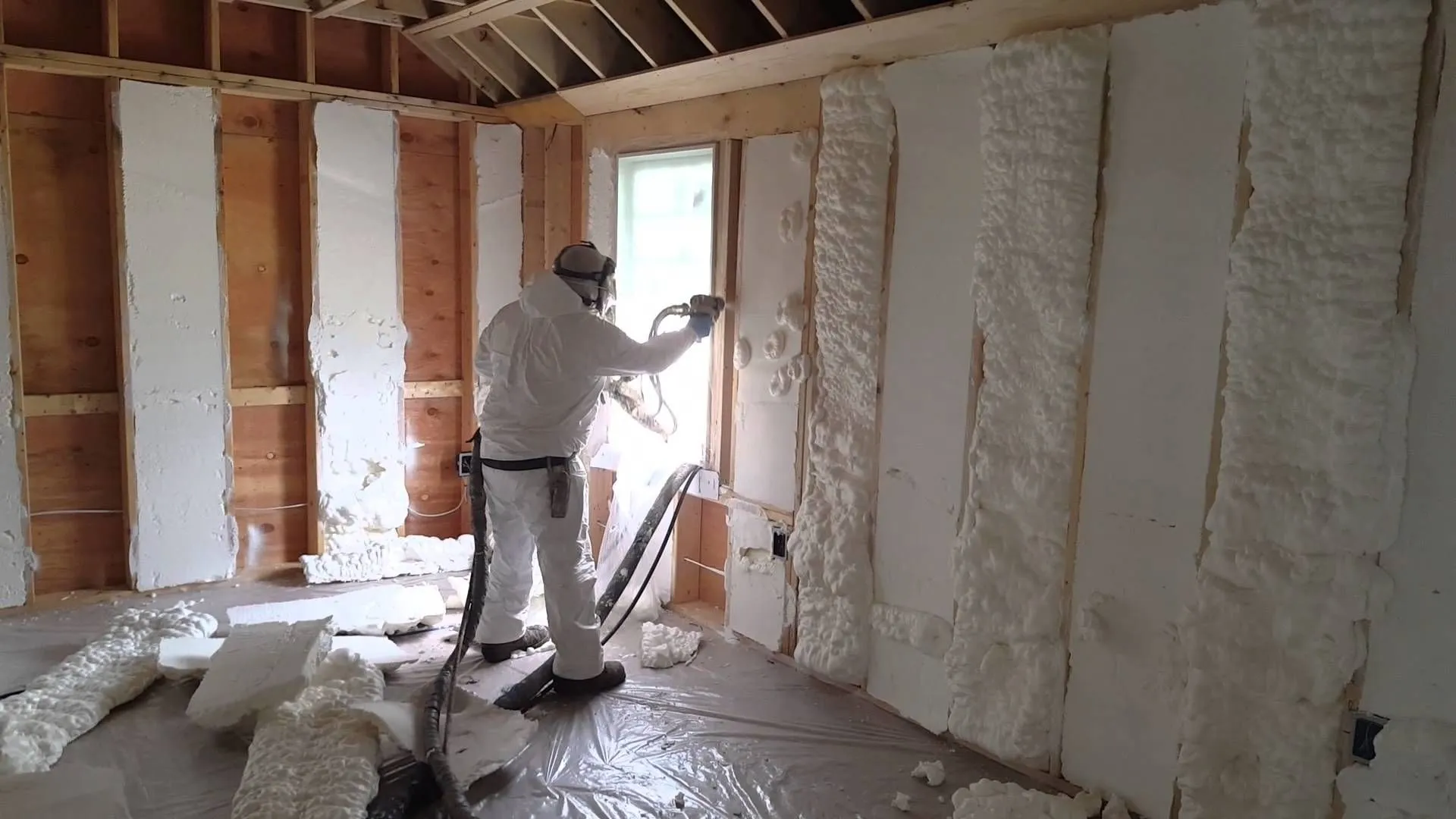Spray foam insulation has become a preferred choice for homeowners and businesses seeking energy efficiency and temperature control. Its ability to create an airtight seal and reduce energy costs makes it a leading insulation material. Understanding its history helps explain why it has evolved into the reliable solution it is today.
The Origins of Spray Foam Insulation
The foundation for spray foam insulation dates back to the early 20th century, when polymer chemistry saw significant advancements. However, the real breakthrough came in the 1940s, when Dr. Otto Bayer developed polyurethane, a key component in modern spray foam. This innovation laid the groundwork for its use in various industries, including insulation.
Polyurethane Foam Development
During World War II, polyurethane was used in military applications for aircraft coatings and cushioning materials. By the 1950s, its commercial potential became evident, leading to its introduction in construction and insulation.
Early Use in Construction
By the 1960s, spray foam insulation started being used in residential and commercial buildings. Unlike traditional insulation materials like fiberglass and cellulose, spray foam provided superior air sealing and moisture resistance. Its ability to expand and conform to irregular spaces made it an attractive option for builders looking to improve energy efficiency.
The Shift to Open-Cell and Closed-Cell Foam
As the technology advanced, two main types of spray foam emerged:
- Open-Cell Foam – A softer, more flexible material offering soundproofing benefits.
- Closed-Cell Foam – A denser, more rigid foam with a higher R-value, making it an excellent insulator and vapor barrier.
Growth and Technological Advancements in the 1980s and 1990s
The demand for better insulation methods led to significant improvements in spray foam formulas. During the 1980s, researchers developed more environmentally friendly blowing agents, reducing the environmental impact of spray foam products. The 1990s saw the introduction of improved application equipment, allowing for better consistency and ease of use.
Regulations and Environmental Considerations
By the late 1990s and early 2000s, regulations focused on reducing harmful chemicals in spray foam formulations. Companies transitioned to low-VOC (volatile organic compound) and ozone-friendly blowing agents, making the product safer for both installers and homeowners.
Modern-Day Spray Foam Insulation
Today, spray foam insulation is recognized for its high energy efficiency, durability, and ability to improve indoor air quality. Many homebuilders and contractors recommend it for new construction and retrofitting older buildings.
Benefits of Modern Spray Foam
- Superior Insulation – Offers higher R-values than traditional materials.
- Air Sealing – Eliminates drafts and prevents heat loss.
- Moisture Resistance – Reduces the risk of mold growth and water damage.
- Long Lifespan – Does not degrade over time like some insulation types.
Choosing the Right Insulation for Your Property
Selecting the best insulation depends on factors such as climate, budget, and building structure. Consulting professionals like Foam Worx Insulation can help determine the most effective solution for each unique space.
Key Innovations in Recent Years
The latest developments in spray foam insulation focus on sustainability and performance enhancements. Some modern advancements include:
- Bio-Based Spray Foam – Made from renewable resources like soy and castor oil.
- Smart Foam Technology – Self-healing foams that can adapt to structural shifts.
- Higher R-Value Formulas – Improved insulation properties to maximize energy savings.
The Future of Spray Foam Insulation
Looking ahead, researchers continue to refine spray foam technology to improve its efficiency and environmental impact. New formulations focus on reducing greenhouse gas emissions while maintaining high insulation performance. As energy efficiency regulations tighten, spray foam is expected to remain a top choice for insulation needs.
Reflecting this continuous innovation, Foam Worx Insulation recently expanded its spray foam services across Rochester, MN, strengthening its commitment to energy-efficient solutions and faster project delivery as winter approaches.
FAQs
When was spray foam insulation first used?
Spray foam insulation was first introduced in the 1960s for construction applications, though its development dates back to the 1940s with the invention of polyurethane.
Is spray foam insulation better than fiberglass?
Yes, spray foam provides superior air sealing, moisture resistance, and a higher R-value compared to fiberglass insulation.
How long does spray foam insulation last?
Properly installed spray foam insulation can last for several decades without degrading, making it a long-term solution.
Is spray foam safe for homes?
Yes, modern spray foam insulation is formulated with low-VOC and environmentally friendly components, making it safe for residential and commercial use.
Can spray foam be installed in existing homes?
Yes, spray foam can be retrofitted into existing walls, attics, and crawl spaces to improve insulation and reduce energy costs.
Does spray foam help with soundproofing?
Open-cell spray foam provides good soundproofing properties, helping to reduce noise transmission between rooms.
What are the environmental impacts of spray foam insulation?
Advancements in spray foam formulations have led to lower environmental impacts, including reduced greenhouse gas emissions and the use of sustainable materials.
How much does spray foam insulation cost?
Costs vary based on factors like foam type, installation area, and regional pricing. Contact Foam Worx Insulation at (507) 407-6688 for a customized estimate.
Can spray foam be applied as a DIY project?
While small projects may be done with DIY kits, professional installation is recommended for optimal results and safety.
Where can I learn more about spray foam insulation options?
Visit Foam Worx Insulation for expert guidance and services tailored to your needs.




